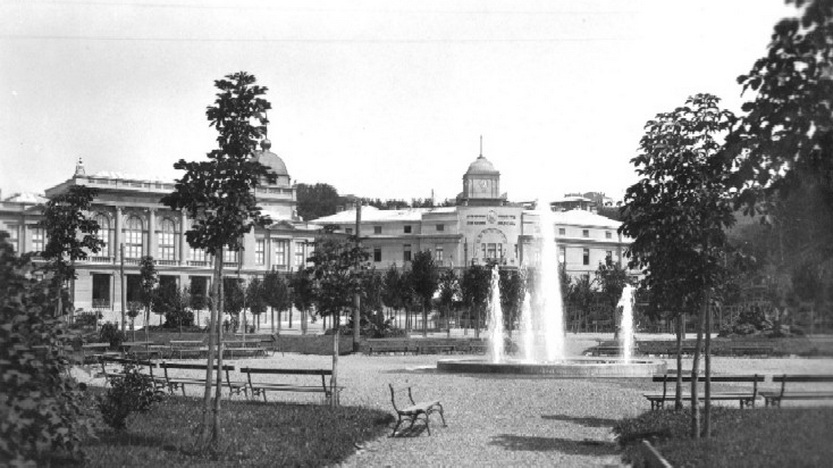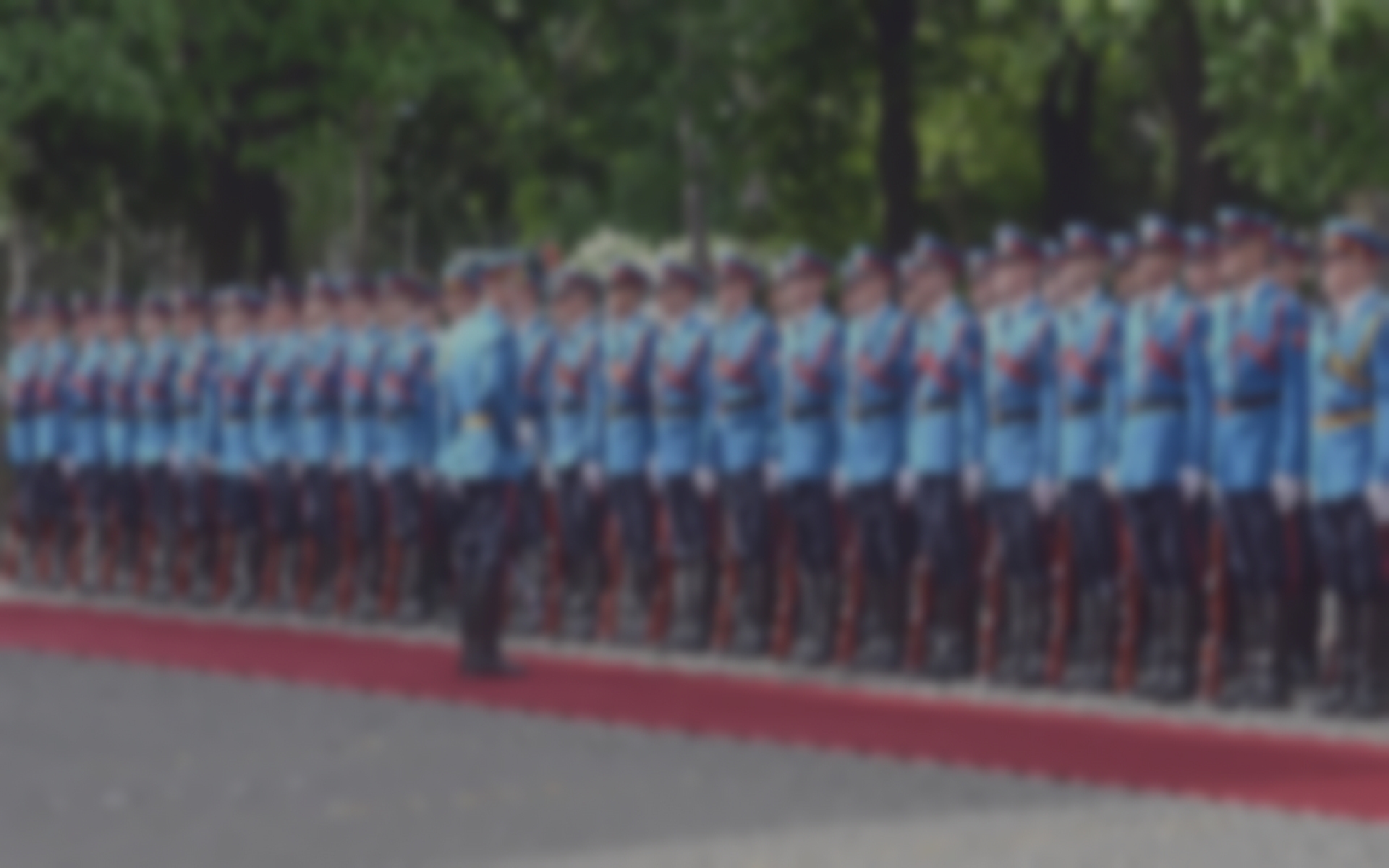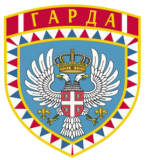The Guard House
By advocating of the commander of the King’s Guard and later the Prime Minister, Division General Petar Zivkovic, opposite one of the fountains in the Guard Park, two representative residences were built – the Guard House and the Headquarters of the King’s Guard. Both have been built in academic architectural style with pilasters, capitals and tympanums on side walls.

The Guard House was built in 1926 according to the design of an unknown architect, though some authors claim that it was designed by the Russian engineer and architect Hranislav Vinogradov. This facility was officially open in the same year on St. George’s Day. The Guard House interior was lavishly decorated. A painter Jovan Bijelic created a cycle of seven compositions which do not exist anymore.
There is a Ceremonial Hall on the first floor of the Guard House. It was specially designed and decorated for officers’ balls. There are the Queen’s and King’s lounges within the Ceremonial Hall. On the wall opposite the entrance there was a large-format portrait of King Aleksandar I Karadjordjevic in the Guard uniform riding on a white horse, which was painted by French painter Georges Scott.
There is the same, but smaller portrait in the White Palace, which was earlier in the sleeping room of King Aleksandar II Karadjordjevic. There were the King’s and Queen’s portraits on both sides of the large portrait. There was a big Venetian chandelier in the central part of the hall which was found in Bulgaria and brought back after the World War II. Unfortunately, during the bombing of the Federal Republic of Yugoslavia in 1999, due to very strong detonation the chandelier fell down and it was damaged in great deal. Currently, there is another chandelier in that place.
There were some outbuildings within the Guard House where the cooks, waiters, hairdressers, barbers and assistants used to work. A bit later, a conservatory was built where the palms from the Guard Park were moved indoors before winter time. The conservatory was used until the period after the World War II.
The Guard House and the outbuildings were fenced with the stone walls where stone sentry boxes were places at the gates. After building the Summer Hall, one of the outbuildings was torn down and after the World War II all the outbuildings were torn down for the purpose of building the Anex Hall. The President of the Guard House was cavalry colonel Ratko Raketic who became the King’s Guard Commander later.
Near the Guard House, precisely just across the House, one more representative facility was built, the Command Headquarters of the King's Guard. As the name implies, it was used by the management staff of the King's Guard. This facility has not changed its original purpose so far, and there were the headquarters of other commands of the Yugoslav People's Armed Forces and Serbian Armed Forces.
Also, during the World War II, one of the Wehrmacht commands was located there by the German occupiers. Behind the Headquarters of the Royal Guard there are two outbuildings and next to them is a water spring. A small fountain with aquarium fish was also built. The two objects have not changed the shape so far, so the Topcider barracks has a distinctive authentic look of the past Guard complex.
The Guard House is a part of the Residential Compunds. It is primarily used for ceremonies, receptions, musical concerts, lectures, trainings, meetings, but when it is not occupied it is used for renting. The Guard House consists of:
- Ceremonial Hall,
- Small Hall,
- Congress Hall,
- Annex Hall,
- Conservatory and a small lounge,
- Yellow and White lounges and halls,
- Refreshment room and a hall.


